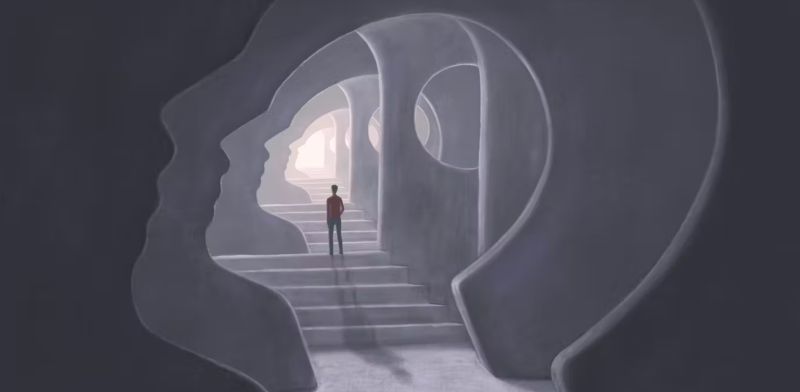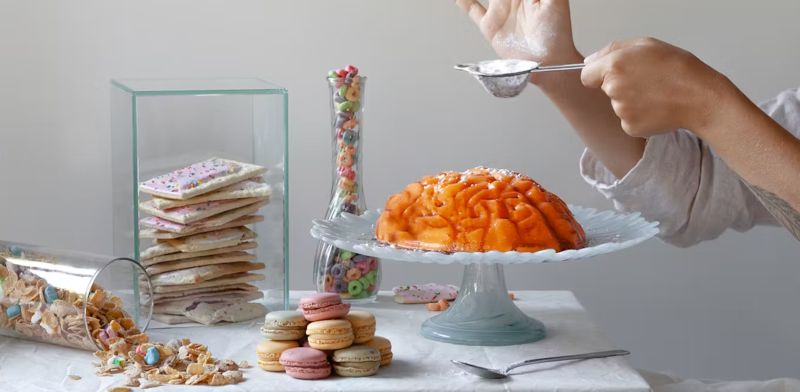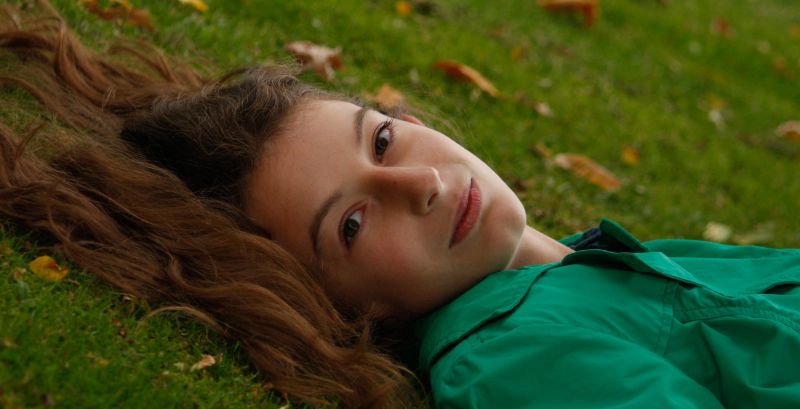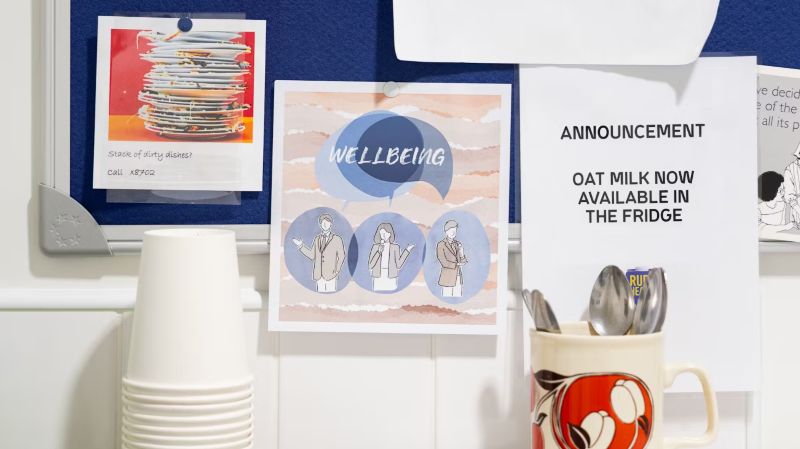
Some believe psychedelic drugs could be the fast track to happiness – and new mental health research seems to suggest these compounds do have positive effects. Kate Wilkinson tracks down a rave-goer with inspiring experiences of MDMA and ayahuasca to share.

By Kate Wilkinson
Proactive digital editor and publishing professional

Laurindo Feliciano
Artist
Simon pinches the pill between finger and thumb, feeling its roundness between the pads of his fingertips. Then it’s in his mouth, and with a sip of water he washes the white solid down his throat, where it starts to dissolve before he can undo the swift operation. His friend grins at him and they shuffle forward in the queue.
If they’d taken the pill closer to the door they might have been noticed, but Simon hopes they didn’t take it too early. He doesn’t know what will happen if he starts getting too high before reaching the entrance. By the time they’re on the dance floor Simon still hasn’t noticed anything different – maybe he’s immune?
He goes to the bathroom. Then suddenly, as he watches his eyes dilate in the mirror, his heart lifts and the throbbing of the music draws him back onto the floor. He feels good in a way he’s never felt before. He never understood the point of electronic music until this moment, at the ripe age of 25.
Simon is recounting the story of his first time on MDMA to me in a busy pub in central London. I’m investigating the relationship between drugs and happiness. Can a pill make you happy? What is the chemical basis for our emotions? Is pleasure dangerous?
Jacques-Joseph Moreau, known as Moreau de Tours, was the first psychologist to experiment with mind-altering drugs and apply their effects to the phenomena of mental illness. In 1845 he wrote: “It is really happiness that hashish gives, and by that I mean mental joy, not sensual joy, as one might be tempted to believe.” He compares the happiness of hashish users to the joy of hearing good news rather than the hungry man satisfying his appetite.

“Simon pinches the pill between finger and thumb. Then it’s in his mouth, and… down his throat, where it starts to dissolve before he can undo the swift operation.”
In making a Cartesian division between joy of the body and joy of the mind, Moreau de Tours conceives of happiness as something richer and more mysterious than indulging the bodily senses. The drug might have a physical basis, but for Moreau de Tours the effects are cerebral and profound. Happiness is usually understood as a state that lasts longer than a drug takes to wear off, a feeling of contentment about your life that builds over time. So how can a drug give happiness?
The reason Simon goes to raves and does MDMA roughly monthly now is not simply for sensual indulgence. He likes the way it allows him to “get a little bit lost in [his] thoughts and think through things in a similar way to meditation”. It’s a moment to step out of his life in London, where he feels pressure to be constantly productive both in and outside of work (he’s currently learning Italian and how to ride a motorbike). “There’s always an opportunity cost to resting,” he says.
Psychedelic Therapy
Our mid-20s are often seen as some of the most independent and carefree years of our lives. But the pressure to “make the most of it” doesn’t lend itself to a happy existence. Ecstasy (MDMA’s popular name) is generally associated with high energy and frenetic dancing, but it was the pace of Simon’s everyday reality that exhausted him. The raving and taking MDMA, he said, “allowed me to engage with a totally different mode of consciousness”.
As neuroscience developed in the early 20th century, the Cartesian division between mind and body carried less weight. The brain has a material basis, like any other organ in the body, though we are far from fully understanding it.
What we do know is that MDMA promotes raised levels of certain chemicals in the brain, especially serotonin, dopamine and noradrenaline. It reduces the amygdala fear response and relaxes the user, promoting feelings of empathy and self-confidence.
Describing these effects in ‘The Psychedelic Renaissance’, psychiatrist Ben Sessa notes that MDMA users experience “a remarkably consistent pleasurable effect” that is “difficult not to enjoy”, compared with the more variable experiences of other mind-altering substances. MDMA has long been used in a clinical setting, and has been found particularly effective in the treatment of post-traumatic stress disorder (PTSD).

“Ayahuasca, a powerful psychedelic made from the leaves of two plants, takes this effect to the extreme, with users reporting a feeling of dissolved ego, or even ‘ego death’.”
Simon says, “You feel a really pure, chemical sense of joy.” But he acknowledges the downsides. There’s evidence that the effects of the drug weaken with repeated use and it’s difficult to recapture the high of that first time. This can lead some users into a kind of semi-dependence, although MDMA isn’t commonly associated with long-term addiction. There are other notable side effects, including increased risk of overheating and dehydration.
In ‘How to Change Your Mind: The New Science of Psychedelics’, the American journalist Michael Pollan explores the use of psychedelics to treat depression and addiction as well as help people with terminal diagnoses face death.
One reason why MDMA feels good is because it enhances a sense of connectedness with the world, breaking down barriers between self and other. Ayahuasca, a powerful psychedelic made from the leaves of two plants, takes this effect to the extreme, with users reporting a feeling of dissolved ego, or even “ego death”. This element of the psychedelic experience seems to lend itself particularly well to therapeutic purposes, allowing people a new sense of perspective.
A mind-altering brew
Three years on from his first MDMA high, Simon sits on a mat in a jungle in Peru with an Andean priest, a doctor, a couple of psychotherapists and a small group of fellow initiates. After weeks of detox – no meat, sex, alcohol, coffee – he’s about to begin the first of two ayahuasca ceremonies. Simon was inspired by Pollan’s book to take ayahuasca for the purpose of personal and spiritual exploration.

“After weeks of detox, Simon’s about to begin the first of two ayahuasca ceremonies… for the purpose of personal and spiritual exploration.”
For Simon, there’s “no comparison” between ecstasy – which is fun, meditative, and brings you up – and ayahuasca, which is revelatory, brutal, and breaks you down. Perhaps his openness to one facilitated his openness to the other, but they are fundamentally different. MDMA is recreational, while ayahuasca feels like “eight years of therapy in one night”. But perhaps ayahuasca is recreational too, in its true sense. The word derives from the Latin recreare, to create again or renew. It’s like a renewal of the self, he says.
Back in London, Simon enjoys raving and doesn’t feel like it’s a temporary phase. “I would love to still be raving when I’m 80 – it’s such a pure experience for me,” he says. But he acknowledges that you don’t see many older people in clubs. As a young gay man in London’s LGBTQ rave scene, he currently fits in perfectly. When he gets older, the opportunities may not present themselves so naturally or frequently.
Michael Pollan started experimenting with psychedelics in his 50s, and reflects, “I’ve begun to wonder if perhaps these remarkable molecules might be wasted on the young, that they might have more to offer us later in life, after the cement of our mental habits and everyday behaviours has set.”
Taking ayahuasca in his mid-20s, Simon was on the point of developing habits and behaviours, but wanted to check they were the right ones, and make sure he was going in the right direction in his job, his long-term relationship, and his relationship with his family. Did taking a powerful psychedelic help? Yes, Simon says. Although he believes he could have used the “slow, meandery path” of meditation to get to the same place. Psychedelics, he says, are like “the Japanese bullet train”.
MDMA draws some towards a feeling of primal energy, collective joy and spiritual oneness among the pulsing bodies at raves. Other more reflective types are drawn by the intellectual and therapeutic possibilities of psychedelics in a more controlled setting. Some, like Simon, are drawn for both reasons. What unites all of them is a curiosity about human consciousness and new experience.
I have a deep natural scepticism towards the idea that consuming a chemical could be in any way related to happiness. It seems like a paltry option in the face of a human being’s complex emotional and social needs. But through our species’ history, consciousness-altering drugs have always been there, and in the right circumstances, can provide a way to see the world, and even your own mind, in a new light.
Originally published by Wellcome Collection, 07.22.2021, under the terms of Creative Commons Attribution 4.0 International license.







